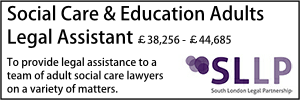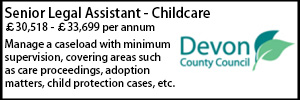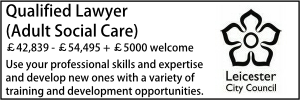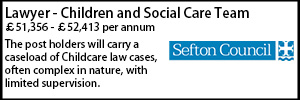Transparently clunky
- Details
Alex Ruck Keene QC (Hon) analyses recent comments made by Mostyn J and transparency orders before the Court of Protection.
In Re EM [2022] EWCOP 31, Mostyn J expressed a number of concerns about the transparency order made in the case before him by Keehan J, in ‘broadly standard’ terms. [1] In particular, he expressed the concern (at paragraph 41):
that it may be technically unsound for two separate reasons namely (i) the order was made in the absence of a Re S-type balancing exercise, weighing the Article 8 ECHR rights of EM with the Article 10 ECHR rights of the public at large, exercised via the press; and (ii) notice of the intention to seek the order had not been given to the press pursuant to s12(2) HRA 1998.
Mostyn J developed his concerns (set out at the end of this post [2]) and continued:
43. Plainly, on 1 July 2022 the media were not notified that a reporting restriction order was being considered. It is equally clear that a Re S balancing exercise undertaken was not undertaken. Had these steps been taken the order would have said so on its face. It is, however, a standard practice, condoned by r.4 COPR and PD4C, not to take these steps. That being so, I respectfully suggest that the correctness (I hesitate to use the word lawfulness) of this standard practice is reviewed by the Rule Committee with input from all relevant stakeholders.
Mostyn J identified a possible solution as being to leave the proceedings to be heard “in private” but to make a standard order at the beginning of the case which relaxes the strictures of section 12 of the Administration of Justice 1960 Act by permitting the press and legal bloggers to attend the hearings and allowing them (and the parties) to report the proceedings provided that they do not identify P directly or indirectly. He pointed to Norfolk County Council v Webster & Ors [2006] EWHC 2733 (Fam) where an equivalent order was made, although noted that Munby J considered in that case that such a permissive order should be characterised as a reporting restrictions order giving rise to both the need for a full balancing act and press notification.
Revisiting the standard transparency order, which dates from 2017, is undoubtedly something which could sensibly be done, not least to see whether it can be made simpler in light of experience. It also requires updating to take account of the fact that there is now a universal set of provisions relating to remote public access to proceedings. It is also to be hoped that the Law Commission’s project on reforming the law of contempt can include consideration of the primary legislation under which the Court of Protection operates. That primary legislation dates from a time when almost all hearings were conducted in private. The position now, however, is that almost hearings take place in public, subject to limitations upon what can be reported (whether by member of the press or otherwise), designed, in particular, to secure the protection of the identity of P. However, because of the way in which the primary legislation operates, it is only possible to achieve that position by way of an individual order being made in each case.
Mostyn J’s point (which appears to be one which he has taken of his own motion, as it does not appear to have been raised by the sole represented party before him) is a very important one – is the current practice of making such orders correct (or perhaps even lawful)?
In response, it might be said that Lady Hale appears to have considered that the court’s approach is lawful, in observations made in relation to the pilot which preceded the changes introduced in the 2017 Rules. In R (C) v Secretary of State for Justice [2016] UKSC 2, concerning the approach to anonymity in civil cases concerning those subject to the Mental Health Act 1983, she outlined the specific considerations applying to proceedings before the Court of Protection before noting the pilot in apparently approving terms:
25. The other specialist jurisdiction dealing with people with mental disorders or disabilities is the Court of Protection. This decides whether or not, because of mental disorder, a person lacks the capacity to make certain kinds of decision for himself and if so, how such decisions are to be taken on his behalf. These include decisions about his care and treatment. Rule 90(1) of the Court of Protection Rules 2007 (SI 2007/1744) [now Rule 4.1] lays down the general rule that hearings are to be held in private. If the hearing is in private, the court may authorise the publication of information about the proceedings (rule 91(1)) [Rule 4.2]. The court may also direct that the whole or part of any hearing be in public (rule 92(1)) [Rule 4.3(1)]. But in either case the court may impose restrictions on publishing the identity of the person concerned or anyone else or any information which might lead to their identification (rules 91(3) and 92(2)) [Rules 4.2(4) and 4.3(2)]. The starting point in the Rules, therefore, is both privacy and anonymity. However, from January 2016, there will be a six month “transparency pilot”, in which the court will generally make an order that any attended hearing will be in public; but at the same time it will impose restrictions on reporting to ensure the anonymity of the person concerned and, where appropriate, other persons.
In V v Associated Newspapers Ltd & Ors [2016] EWCOP 21, Charles J (the then-Vice President of the Court of Protection), who introduced the transparency pilot and the new provisions, identified that made clear that he considered that it would be wrong to take an approach to issues relating to reporting (and hence to the weight to be given to competing ECHR rights) which proceeded on the basis that the starting point would be that there would be a public hearing, and that any reporting restrictions would be sought or granted from that position. Rather, he made clear at paragraph 87, the starting point was the default rule which:
i) reflects a well-established exception to the general approach that courts sit in public, and
ii) founds a distinction, equivalent to that recognised in Re C at paragraph 21, between reporting restrictions orders and anonymity orders made by the COP and many such injunctions made in other circumstances.
Whilst Charles J considered that a Re S balancing exercise needed to be carried out, he also made clear (in his summary, paragraph 9) that there was a distinction between:
(a) cases where pursuant to the default or general position under the relevant Rules or Practice Directions the court is allowing access (or unrestricted access) to the media and the public, and (b) cases in which it is imposing restrictions and so where the court is turning the tap on rather than off.
As Mostyn J noted, Practice Direction 4C embeds the practice of the court ‘generally making’ an order that attended hearings are in public, but at the same time imposing reporting restrictions. Mostyn J did not address specifically in his observations the fact that Practice Direction 4C, read together with model transparency order, anticipates such an order would be made by the court at the point of listing the first attended hearing. In other words, and in the ordinary course of events, this would be an order made on the papers at the very earliest case management stage of the proceedings. Pragmatically, requiring (1) a full-scale Re S analysis and (2) notification of the press before any such order was made would build in a level of delay and complexity that would be unlikely to be attractive – let alone acceptable.
Whilst I entirely agree that it would be appropriate for the ad hoc Rules Committee to take a further look at the practice and procedure, my starting proposition is that the pragmatic approach embodied in the transparency Practice Direction is defensible for the following reasons.
It is a perhaps unsurprising feature of the case-law such as Re S that it relates to situations where the competing rights are being asserted by specific individuals or organisations: most obviously, the press asserting a right under Article 10 ECHR, and a person or people asserting a right under Article 8. In other words, there are specific arguments being advanced in relation to a specific case. At that point, and as Lord Steyn made clear in Re S, the court’s task to evaluate the competing rights with an intense focus as to their comparative importance.
The situation here, though, is rather different. It relates to the application of a general provision guiding judges as to the application of the Re S balancing exercise in circumstances where Parliament has decreed that the starting point is that the tap of publicity is off and the court is deciding whether to turn it on.
The making of a transparency order is a judicial decision. I would therefore suggest that the making of the order represents the implicit (summary) judicial determination that the appropriate Re S balance is as set down in the Practice Direction. In the absence of arguments having been advanced as to the comparative importance of the rights in play, I would suggest that such a summary determination is appropriate. It is clear from the work of the Open Justice Court of Protection Project that judges of the Court of Protection are acutely alive to the issues to which listing a hearing in public gives rise. The transparency order could undoubtedly include a recital expressly referring to Re S, but I would suggest that this would be likely to be more for form’s sake than anything else.
As regards the application of s.12 HRA 1998, requiring prior notification [3] before relief is granted which might affect the exercise of the ECHR right to freedom of expression, it is important to note the observations of Charles J made in 2017. To put these observations in their context, at that point there was separate category of serious medical treatment cases governed by their own practice direction. In a note he published explaining why the then-Transparency pilot approach of no prior notification would be the same for all categories of case, Charles J identified that:
A change for serious medical cases is that prior notice of the making of a Pilot Order will not be given to the media. On that topic in the Schedule to my judgment in V v ANL I said:
“To my mind proper notification to the media of the existence of the proceedings and of the date of the public hearing of a case relating to serious medical treatment and the terms of any reporting restrictions order made when a public hearing is directed is what really matters. And when that order follows a standard process referred to in a practice direction or rules it seems to me that:
- there are compelling reasons why the parties bound by the reporting restrictions order need not be notified of the application (see s. 12(2) of the HRA 1998), particularly if they are defined by reference to those who attend the public hearing (or get information from those that do), and
- this view is supported by the approach of the Court of Appeal in X v Dartford and Gravesend NHS Trust (Personal Injury Bar Association and another intervening) [2015] 1WLR 3647 in particular at paragraphs 25 to 35.
If those bound by the order (and so the media) have such notification they can then attend the hearing knowing, in general terms, what the case is about and the terms of the reporting restrictions order and they can challenge that order then or at another time.
There is now formally no category of serious medical treatment cases, even if they are, in practice, treated differently. That makes it all the clearer that the logic applied by Charles J to dispensing with prior notice of the making of a transparency order either applies to all cases or no cases.
As can be seen, Charles J’s approach was predicated upon proper notification of the existence and nature of the hearing on the relevant listing pages. This is provided for at paragraph 3 of the model order. The Open Justice Court of Protection Project has been – rightly – vocal in its identification of the ways in which this has not always happened, for reasons (by way of explanation, not excuse) which are often outside the direct control of the Court of Protection. However, it is not clear – at least to me – that the problem is systematically so great that it means that the logic of Charles J does not still apply.
In conclusion, therefore, I would respectfully agree that Mostyn J was right to raise the questions that he did (albeit that it is perhaps unfortunate that he did so in a case where he does not appear to have had any submissions made to him or, for instance, to have the observations of Charles J drawn to his attention). If – or, as I hope, when – the MCA 2005 is amended, it seems to me that it would be possible to make clear in primary legislation (1) that the statutory default position is for hearings to be held in public subject to reporting restrictions; and (2) the penalties for non-compliance with any such reporting restrictions. That would make life both easier and clearer for all concerned.
In the interim, the reality is that there is a choice between the court defaulting back to purely private hearings or to maintaining the current pragmatic balancing act that it does. Mostyn J’s proposed potential alternative of maintaining the proceedings in private but relaxing the effect of s.12 Administration of Justice Act 1960 undoubtedly merits consideration by the ad hoc Rules Committee. However, as he identified, Munby J considered that even the making of such required a full Re S balancing exercise and press notification. Such would therefore not solve problem that such is simply not viable on a wide scale.
However, for the reasons set out above, it seems to me that the current approach of the Court of Protection, whilst a clunky workaround, is a defensibly clunky workaround.
Alex Ruck Keene QC (Hon) is a barrister at 39 Essex Chambers. This article first appeared on his Mental Capacity Law & Policy blog.
—–
[1] He also expressed strong views about the continued use of initials to anonymise orders and individuals within proceedings.
[2] Mostyn J then amplified his concerns as follows:
i) Rule 4.1(1) of the COPR provides that the “general rule is that a hearing is to be held in private”. The rest of Rule 4.1 says nothing about what can be reported about such a hearing. It prevents a journalist attending the hearing, but its terms do not prevent any party talking to a journalist or that journalist subsequently writing a report.
ii) Section 12 of the Administration of Justice Act 1960 imposes a blanket ban on reporting proceedings brought under the Mental Capacity Act 2005, but r.4.2 COPR and Practice Direction 4A allow, for the purpose of the law of contempt, certain disclosures to be made.
iii) Rule 4.3(1) and (2) COPR supplies the court’s power to order that a hearing be held in public and, consequentially to that order, to impose reporting restrictions.
iv) Rule 4.3(3) provides that:
“A practice direction may provide for circumstances in which the court will ordinarily make an order under paragraph (1), and for the terms of the order under paragraph (2) which the court will ordinarily make in such circumstances.” (emphasis added)
v) Practice Direction 4C has been made under r4.3(3), and provides that:
“2.1 The court will ordinarily (and so without any application being made) –
(a) make an order under rule 4.3(1)(a) that any attended hearing shall be in public; and
(b) in the same order, impose restrictions under rule 4.3(2) in relation to the publication of information about the proceedings.
2.3 An order pursuant to paragraph 2.1 will ordinarily be in the terms of the standard order approved by the President of the Court of Protection and published on the judicial website at www.judiciary.gov.uk/publication-court/court-of-protection/. (emphasis added)
vi) The emphasised passages in r. 4.3(3) and PD4C, paras 2.1 and 2.3, provide for a standard order to be made almost automatically: i.e. without any enquiry whether such an order is appropriate on the facts of a given case. That such an enquiry is necessary flows from the fact that the transparency order is undoubtedly a form of reporting restrictions order.
vii) Reporting restriction orders can only be made following a court conducting the ‘ultimate balancing exercise’ between Article 8 and Article 10 ECHR rights as described by Lord Steyn in Re S (a child) [2004] UKHL 47; [2005] 1 AC 593 as follows:
“The interplay between articles 8 and 10 has been illuminated by the opinions in the House of Lords in Campbell v MGN Ltd [2004] 2 WLR 1232. For present purposes the decision of the House on the facts of Campbell and the differences between the majority and the minority are not material. What does, however, emerge clearly from the opinions are four propositions. First, neither article has as such precedence over the other. Secondly, where the values under the two articles are in conflict, an intense focus on the comparative importance of the specific rights being claimed in the individual case is necessary. Thirdly, the justifications for interfering with or restricting each right must be taken into account. Finally, the proportionality test must be applied to each. For convenience I will call this the ultimate balancing test.” (emphasis added)
viii) There is no sidenote in the standard order template saying that a Re S balancing exercise must be undertaken, such as to prompt the judge to turn his or her mind to that exercise. Nor was there any statement in the specific order of Keehan J dated 1 July 2022 that this exercise had been actually undertaken.
ix) Save where there are compelling reasons why the press should not be notified, a reporting restriction order can only be made after all practical steps have been taken to give the press notice of the intention to seek such an order. But there is no provision to this end in r.4 COPR or PD4C. Such notification is required pursuant to s12 HRA 1998, which provides that:
(1) This section applies if a court is considering whether to grant any relief which, if granted, might affect the exercise of the Convention right to freedom of expression.
(2) If the person against whom the application for relief is made (“the respondent”) is neither present nor represented, no such relief is to be granted unless the court is satisfied:
(a) that the applicant has taken all practicable steps to notify the respondent; or
(b) that there are compelling reasons why the respondent should not be notified.”
x) There is no rubric or sidenote in the standard order template saying that the press must be notified prior to the order being made, nor is there any statement that this occurred in the order of Keehan J dated 1 July 2022.
[3] Mostyn J appears to have thought in terms of notification of the press. However, the transparency approach in the CoP is to open the doors to all comers, rather than just the press. Members of the public at large could also in principle assert a right to freedom of expression, so logically, in fact, such notification would have to be to everyone.























































